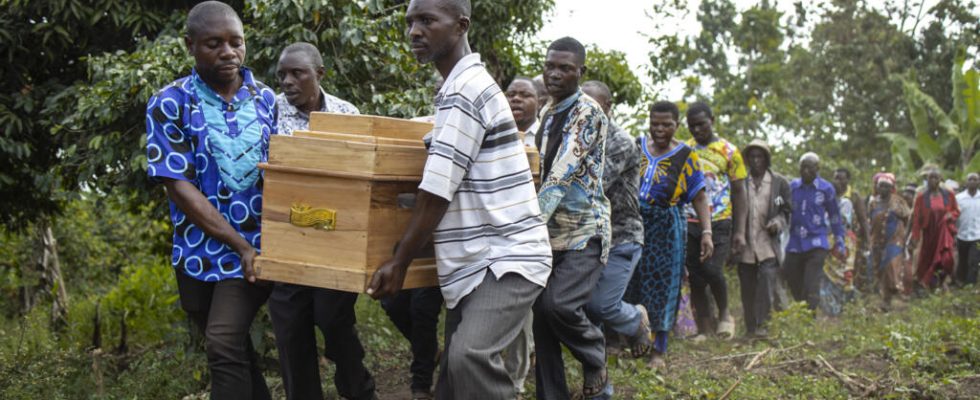Uganda is once again rocked by attacks by ADF rebels after they burned a woman and two children alive on Christmas Day in a western village in Kamwenge district, it has been learned Tuesday December 26. This region close to the Congolese border had already been the scene of an attack last week, also attributed to the ADF, and which left 10 dead. Voices are being raised against the authorities after this new proof of the persistence of violence.
3 mins
These attacks highlight the persistence of the violence perpetrated by these militias affiliated with the terrorists of the Islamic State group, despite joint security operations by the Ugandan and Congolese armies.
“ We promised us total securitybut the ADF rebels have returned and are killing our people », insisted Wednesday the bishop of the diocese of Mbale, John Wilson Nandaah, in a column in the newspaper Daily Monitor. “ Residents in the Rwenzori sub-region live in fear “, he pointed out, urging the authorities to strengthen security in western Uganda.
A statement that contrasts with the official line. Because for President Yoweri Museveni, the fight against the ADF has recorded several military successes. He claimed on December 13 that around 200 ADF members had been killed in airstrikes carried out by Ugandan forces in the Democratic Republic of Congo.
For the head of state, the group’s latest attacks are ” the work of terrorists desperately fleeing bombings in Congo “.
The question remains whether the ADF rebels have withdrawn their activities from North Kivu to western Uganda. Their latest raids targeting a school and a national park in this region seem to suggest this hypothesis.
“ There are similarities between the ADF and local populations, which poses a problem »
More mobile, fewer in number, the ADF rebels today move in small groups in their areas of operation in the provinces of North Kivu and Ituri, and now also in western Uganda. This modus operandi allows them to hide better, also favored by the porosity of the borders, this is what Tolit Atiya, co-founder of the Nile Valley Institute for Political and Security Studies, explains:
“ These are traveling troops. The ADF no longer has specific operational bases. Unlike in the past, they no longer want to control a territory. They move in small cells. The border between Uganda and the Democratic Republic of Congo is porous, with numerous crossing points. »
“The tribal groups on the border speak the same language. There are a lot of exchangeshe continues. The observation is therefore that, even if we try to contain the ADF rebels, the question of common relations, of groups which share the same identity arises. There are similarities between the ADF and local populations, which also poses a security problem. »
The Ugandan authorities must “ address root causes »
Uganda has been the victim of several attacks attributed to the ADF in recent months. All took place in the west of the country, near the Congolese border.
Faced with this situation, several voices are calling for the reestablishment of self-defense groups, as was the case during the war against the Lord’s Resistance Army (LRA) between 1986-2006.
For researcher Tolit Atiya, this solution risks further militarizing the hunt for the ADF, by involving communities. For him, the root causes of the movement should first be tackled, before its consequences: “ As long as the Ugandan authorities do not address the root causes of the movement, which continues to recruit young people », the ADF will continue to strike Ugandan territory.
Read alsoUganda: in Kanyatsi, former ADF crossing to Uganda, the population is mobilizing [2/3]
